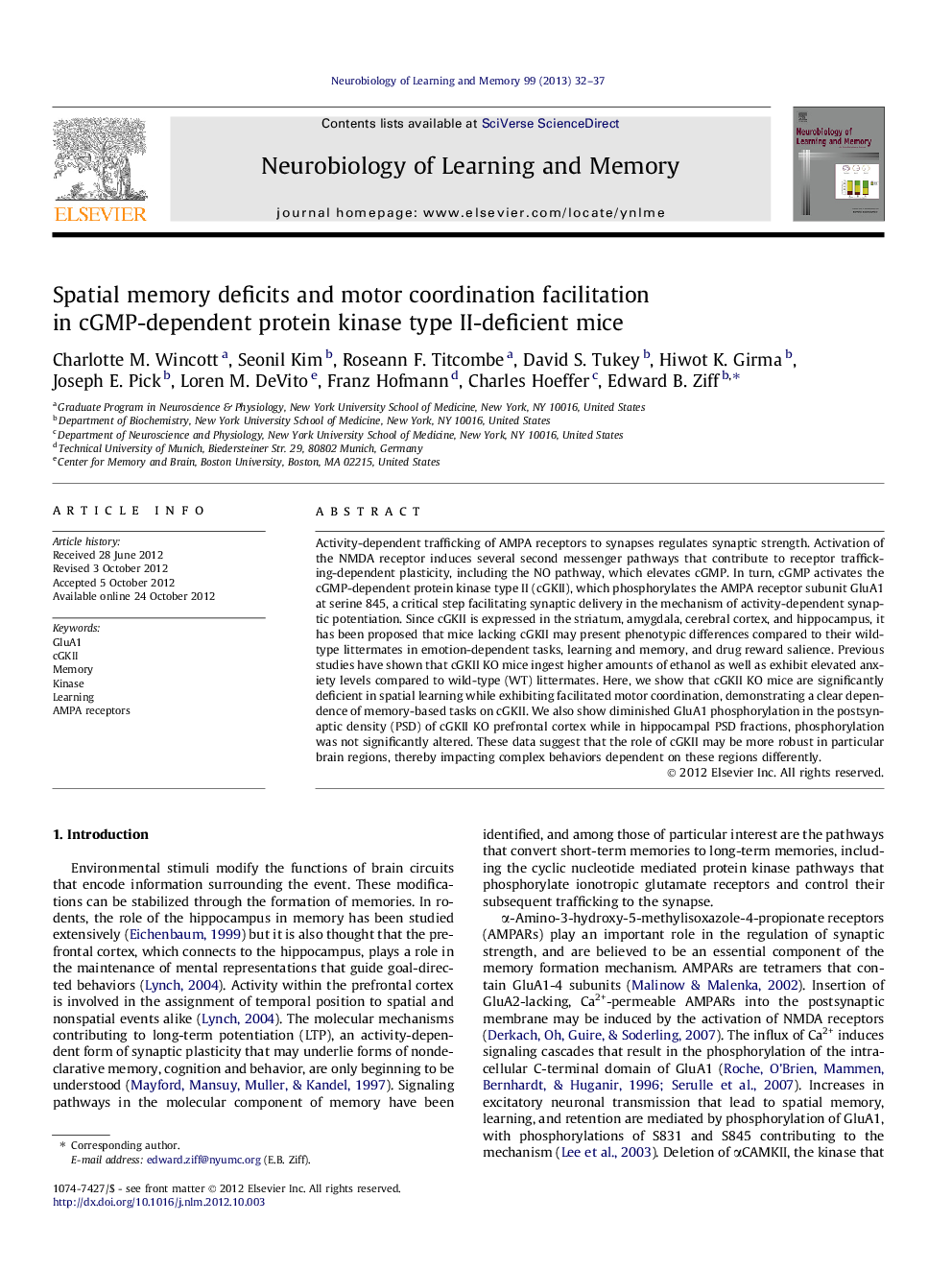| Article ID | Journal | Published Year | Pages | File Type |
|---|---|---|---|---|
| 936683 | Neurobiology of Learning and Memory | 2013 | 6 Pages |
Activity-dependent trafficking of AMPA receptors to synapses regulates synaptic strength. Activation of the NMDA receptor induces several second messenger pathways that contribute to receptor trafficking-dependent plasticity, including the NO pathway, which elevates cGMP. In turn, cGMP activates the cGMP-dependent protein kinase type II (cGKII), which phosphorylates the AMPA receptor subunit GluA1 at serine 845, a critical step facilitating synaptic delivery in the mechanism of activity-dependent synaptic potentiation. Since cGKII is expressed in the striatum, amygdala, cerebral cortex, and hippocampus, it has been proposed that mice lacking cGKII may present phenotypic differences compared to their wild-type littermates in emotion-dependent tasks, learning and memory, and drug reward salience. Previous studies have shown that cGKII KO mice ingest higher amounts of ethanol as well as exhibit elevated anxiety levels compared to wild-type (WT) littermates. Here, we show that cGKII KO mice are significantly deficient in spatial learning while exhibiting facilitated motor coordination, demonstrating a clear dependence of memory-based tasks on cGKII. We also show diminished GluA1 phosphorylation in the postsynaptic density (PSD) of cGKII KO prefrontal cortex while in hippocampal PSD fractions, phosphorylation was not significantly altered. These data suggest that the role of cGKII may be more robust in particular brain regions, thereby impacting complex behaviors dependent on these regions differently.
► cGKII KO mice are significantly deficient in spatial learning in the Morris Water Maze. ► cGKII KO mice exhibit facilitated motor coordination in the Rotating Rod Test. ► Decreased S845 GluA1 phosphorylation in the PSD of cGKII KO prefrontal cortex.
